Ice ages and the greenhouse effect
Goals:
- Get acquainted with the history of scientific research on greenhouse warming. [And how long that science has been around to be tested / discussed / refuted if possible.]
- Distinguish between the "natural" greenhouse effect, and "anthropogenic" (caused by humans) greenhouse warming.
- Context: what would our planet be like without any greenhouse gases?
- Raise the puzzle of water as a greenhouse gas.
- Raise the puzzle of our planet's wild climate swings.
N vs S Indiana and 'Erratic' boulders
Compare the landscape of Brown County in southern IN:
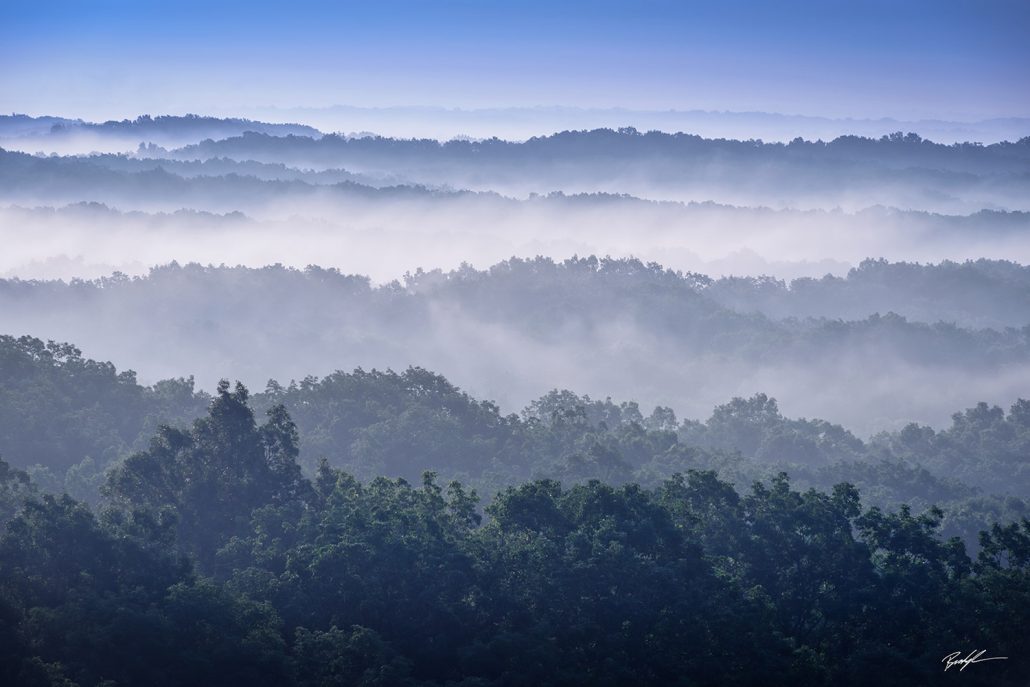
...with the "bulldozed flat" appearance of the Elkhart Prairie, south of Goshen

Goshen Municipal Airport, Easy Fly club
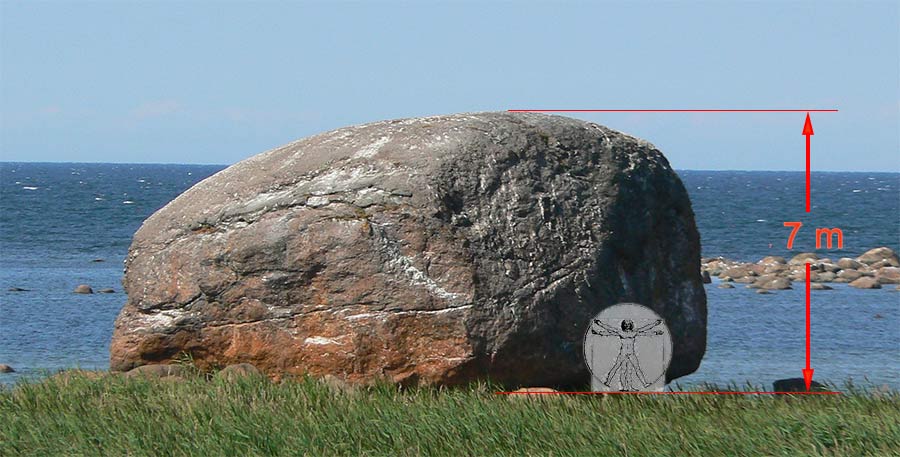
Ehalkavi, an Estonian erratic boulder. Wikipedia user Zusma
In the mid-1800s scientists became fascinated by "erratic" boulders. These are large rocks of a different type from most other local stone. It's as if they have been "carried" from another place.
One early explanation was that a great flood had carried them from one place to another.
Observant Swiss, among them the engineer Ignaz Venetz, noticed the boulders below glaciers, as if they had been pushed there...by glaciers. Venetz proposed (1821) that much of Northern Europe had once been covered by glaciers.
Louis Agassiz had been convinced by Jean Charpentier and others to visit the Aar Glacier in the Swiss Jura.
Invited (1837) to talk to Swiss Natural History Society about his specialty, fossil fish, Agassiz instead decided to talk about something completely different: He proposed that Earth's climate goes through drastic changes, and that the whole Northern Hemisphere had once been covered with glaciers.
This radical proposal has by now moved into orthodoxy. It appears that 11,000 years ago, glaciers had come further south than Goshen (but not as far as Brown county He
wondered if changes in Earth's atmosphere could play a role in such a massive change of Earth's climate as the Ice Age(s).
...,GHGs, for short, are gases which absorb infrared radiation (also called IR or heat radiation).
They act like an "insulating blanket" on Earth, keeping energy trapped in Earth's atmosphere, that would otherwise escape to outer space.
The GHGs which have the most influence on Earth's temperature (and therefore climate) include:
There are many gases in our atmosphere, including $N_2$, $He$, $Ar$, $O_2$ which absorb very little IR.
In 1896 Arrhenius published his calculations which estimated that cutting the $CO_2$ concentration in Earth's atmosphere in half would lower the average temperature in Northern Europe by about 4-5${}^o$C--a temperature drop compatible with the ice ages.
He consulted a friend, Arvid
Högbom, about the natural sources (and sinks) of $CO_2$. It occurred to Högbom to make a comparison of the amount of $CO_2$ from factories and other human activities with geochemical (natural) sources of $CO_2$, and he found that they were about the same amount.
Arrhenius calculated the temperature change due to doubling the $CO_2$ in the atmosphere, and estimated a temperature rise of 5-6${}^o$, but thought it would take several centuries for this to happen.
Consider the combustion of methane...
$$CH_4+2O_2\Rightarrow CO_2+2H_2O$$
Why do all these scientists seem to ignore *water* as a GHG?
The original question that fascinated Arrhenius: Were the ice ages caused by drops in $CO_2$? (And why did $CO_2$ levels drop?)
We can also observe the atmospheres of other planets (European Space Agency)
to learn about the effect of GHG's.
Reference: "The Discovery of Global Warming" (2017), American Institute of Physics.
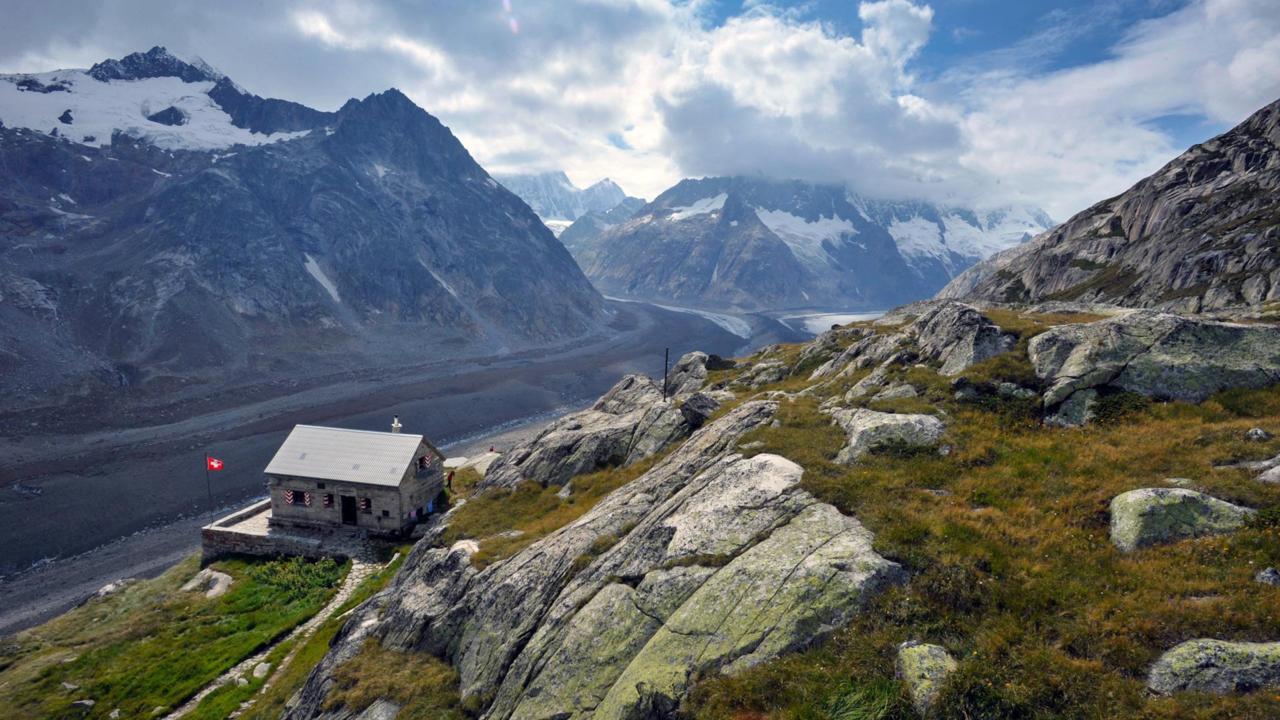
The Lauteraar hut, 200 m above the Unteraar glacier. Eric Guth
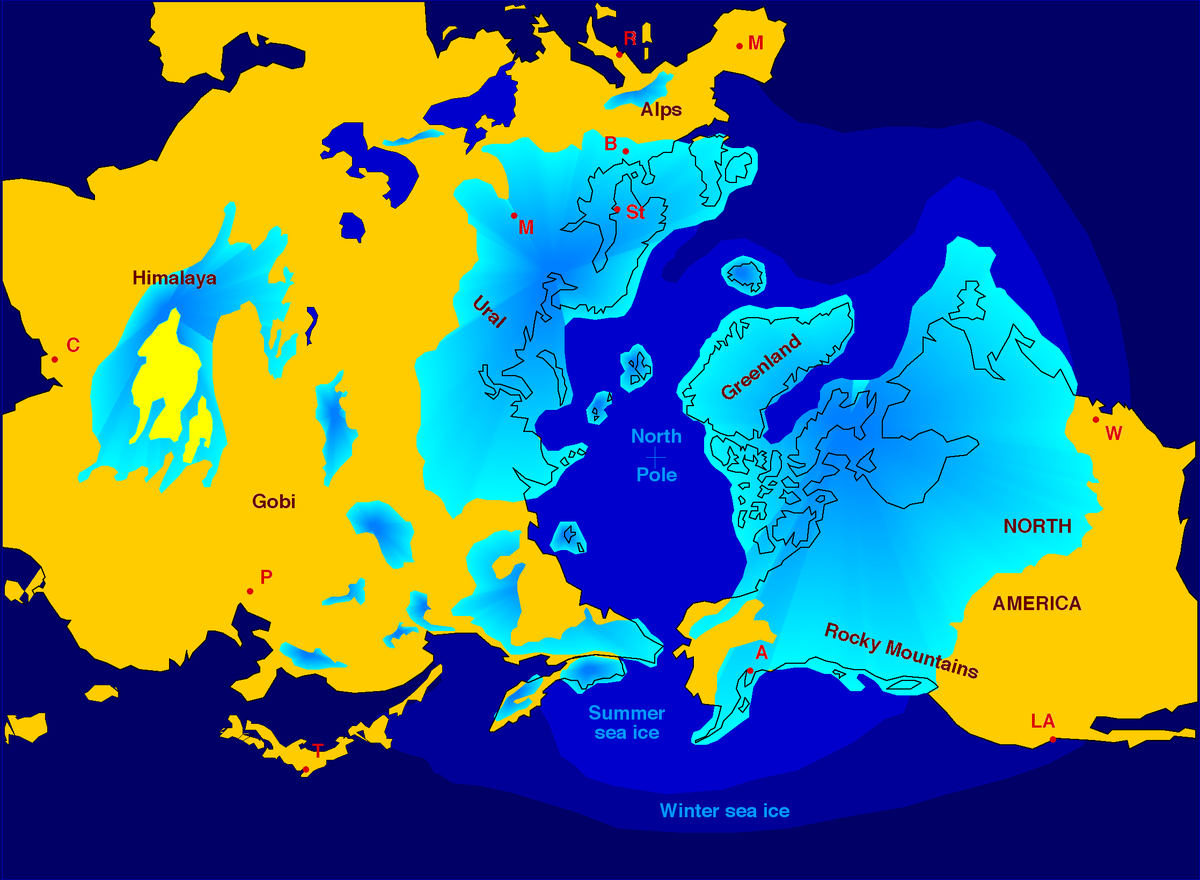
 XKCD portrays the thickness of these ice sheets above the current day locations of cities. (Hover with mouse to
see the *citation*!)
XKCD portrays the thickness of these ice sheets above the current day locations of cities. (Hover with mouse to
see the *citation*!)
Current day consequences
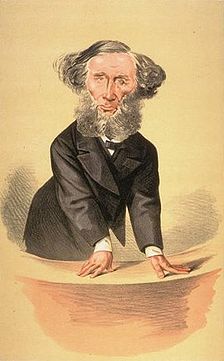 John Tyndall: By 1859 his laboratory work had identified two common atmospheric gases, $CO_2$ and $H_2O$, which trapped "heat rays", which we now call heat radiation, or infrared (IR) radiation.
John Tyndall: By 1859 his laboratory work had identified two common atmospheric gases, $CO_2$ and $H_2O$, which trapped "heat rays", which we now call heat radiation, or infrared (IR) radiation.
Greenhouse gases
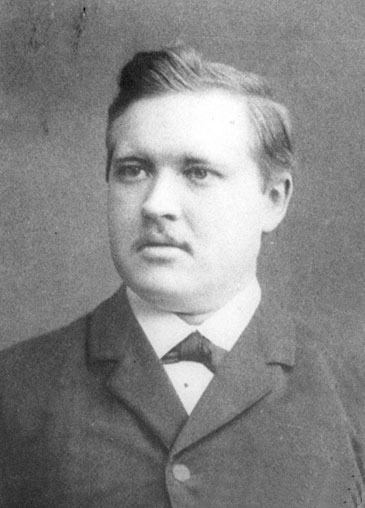 Svante Arrhenius, 1859-1927
Svante Arrhenius, 1859-1927
What about water vapor?
What about the ice ages?